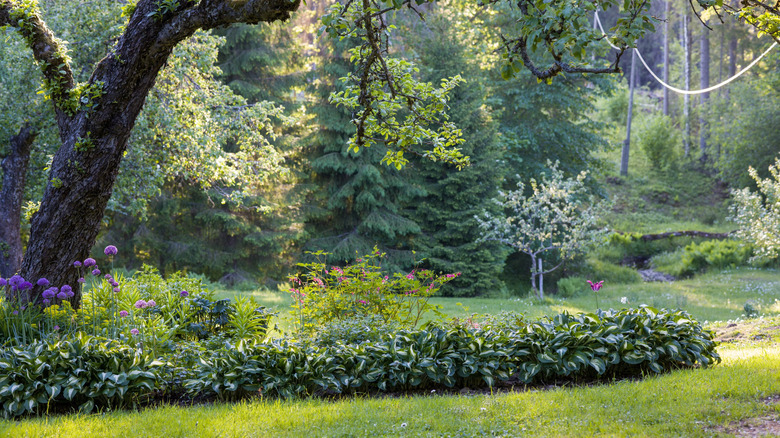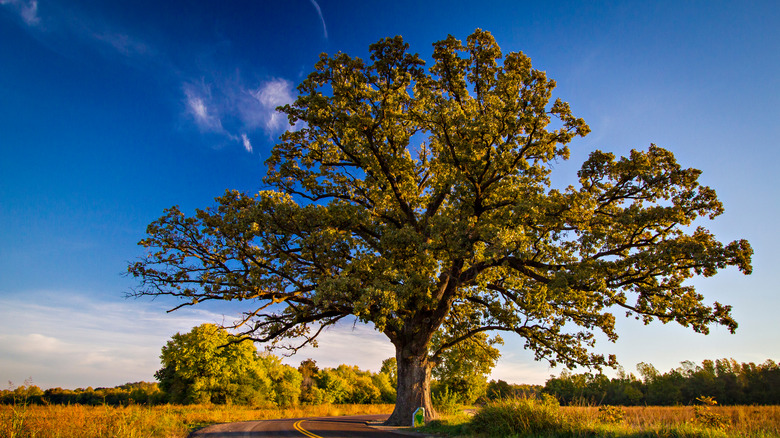The Huge Showstopper Of A Tree That Requires No Special Upkeep
If you only have room for one tree in your yard, you want to make it a showstopper, and preferably one that doesn't demand too much special care. Let's face it, if this tree is going to take center stage, it has to be worthy of such a prestigious achievement. Of course, it would be a bonus if this splendid tree were also cold-hardy, drought-resistant, and a haven for wildlife. Such a tree does exist, and it's a North American native that you're going to love. It's the burr oak — a magnificent specimen that will enhance your yard without requiring any special upkeep at all. Although there are numerous types of oak trees you can plant in your yard, this species is especially outstanding.
The burr oak (Quercus macrocarpa) will grow happily in USDA zones 3 through 8 and can reach a lofty height of 80 feet with a similar spread. This superb large low-maintenance tree will be admired for years to come with its deeply furrowed bark, gray-green leaves, and yellow catkin flowers. You'll also appreciate the large acorns with their warm copper color that appear in the fall. As it grows, the burr oak transforms into an impressive shade tree that will stand tall in your garden with its strong branches and limbs spreading out to provide shelter from the scorching sun. In the fall, it will once again astound you as its foliage turns a gorgeous golden yellow color before falling down to cover the ground with its glow.
All you need to know about growing a bur oak
The bur oak is extremely easy to grow. It can tolerate a wide range of soils, even heavy clay. Once planted in your yard, you'll find it quite fast-growing, as far as white oaks go, putting on around 1 foot per year. Make sure you choose the planting site carefully because once it's established, it can survive for hundreds of years, and as it has a long taproot, it doesn't transplant well. It's recommended that you keep the tree well-watered during its first year of growth and during long dry spells for another two years. After that, it should survive on rainwater alone as it's very drought-tolerant. Applying a layer of mulch around the base to limit moisture evaporation and control grass growth will also help a young tree. This is why you should be mulching around your trees, anyway.
You'll find that a healthy bur oak is generally not harmed by pests or diseases, and this species is mostly resistant to oak wilt. What you'll find even more appealing about this tree is that it provides food for many animals, such as squirrels, deer, and raccoons. It also provides optimum nesting sites for birds among its sturdy branches and plays host to a variety of different moth and butterfly species. Finally, although it's not essential to do this, you will want to find out the best time of year to prune your oak trees so that they continue to grow strong.

